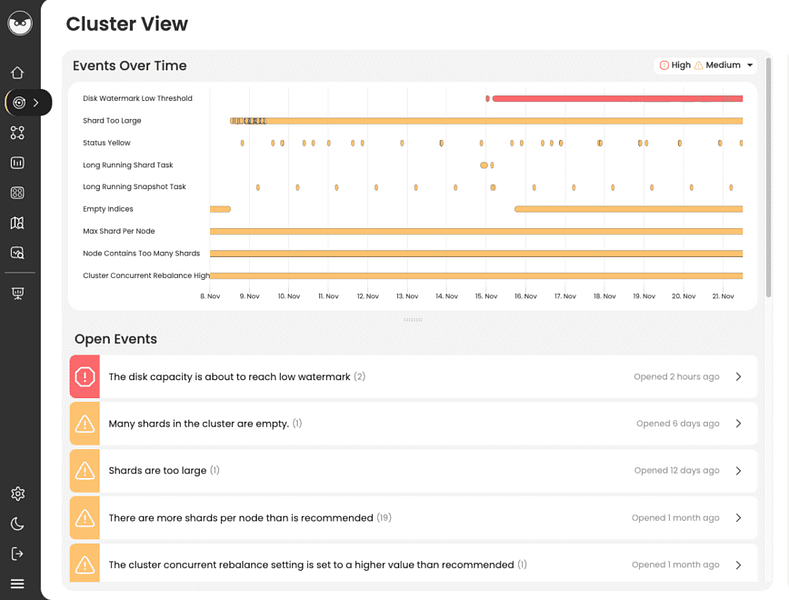Opster Team
Last updated: Oct 30, 2022
| 2 min readIn addition to reading this guide, we recommend you run the Elasticsearch Health Check-Up. It will detect issues and improve your Elasticsearch performance by analyzing your shard sizes, threadpools, memory, snapshots, disk watermarks and more.The Elasticsearch Check-Up is free and requires no installation.
To manage all aspects of your OpenSearch operation, you can use Opster’s Management Console (OMC). The OMC makes it easy to orchestrate and manage OpenSearch in any environment. Using the OMC you can deploy multiple clusters, configure node roles, scale cluster resources, manage certificates and more – all from a single interface, for free. Check it out here.
Quick links
Overview
Mapping is similar to database schemas that define the properties of each field in the index. These properties may contain the data type of each field and how fields are going to be tokenized and indexed. In addition, the mapping may also contain various advanced level properties for each field to define the options exposed by Lucene and OpenSearch. You can create a mapping of an index using the _mappings REST endpoint. The very first time OpenSearch finds a new field whose mapping is not pre-defined inside the index, it automatically tries to guess the data type and analyzer of that field and set its default value. For example, if you index an integer field without pre-defining the mapping, OpenSearch sets the mapping of that field as long.
Examples
Create an index with predefined mapping:
PUT /my_index?pretty
{
"settings": {
"number_of_shards": 1
},
"mappings": {
"properties": {
"name": {
"type": "text"
},
"age": {
"type": "integer"
}
}
}
}Create mapping in an existing index:
PUT /my_index/_mapping?pretty
{
"properties": {
"email": {
"type": "keyword"
}
}
}View the mapping of an existing index:
GET my_index/_mapping?pretty
View the mapping of an existing field:
GET /my_index/_mapping/field/name?pretty
Notes
- It is not possible to update the mapping of an existing field. If the mapping is set to the wrong type, re-creating the index with updated mapping and re-indexing is the only option available.
Common problems
- The most common problem in OpenSearch is incorrectly defined mapping which limits the functionality of the field. For example, if the data type of a string field is set as text, you cannot use that field for aggregations, sorting or exact match filters. Similarly, if a string field is dynamically indexed without predefined mapping, OpenSearch automatically creates two fields internally. One as a text type for full-text search and another as keyword type, which in most cases is a waste of space.
- The mapping of each index is part of the cluster state and is managed by master nodes. If the mapping is too big, meaning there are thousands of fields in the index, the cluster state grows too large to be handled and creates the issue of mapping explosion, resulting in the slowness of the cluster.
Find & fix Elasticsearch problems
Opster AutoOps diagnoses & fixes issues in Elasticsearch based on analyzing hundreds of metrics.
Fix Your Cluster IssuesConnect in under 2 minutes

Matt Watson
CTO at Stackify





